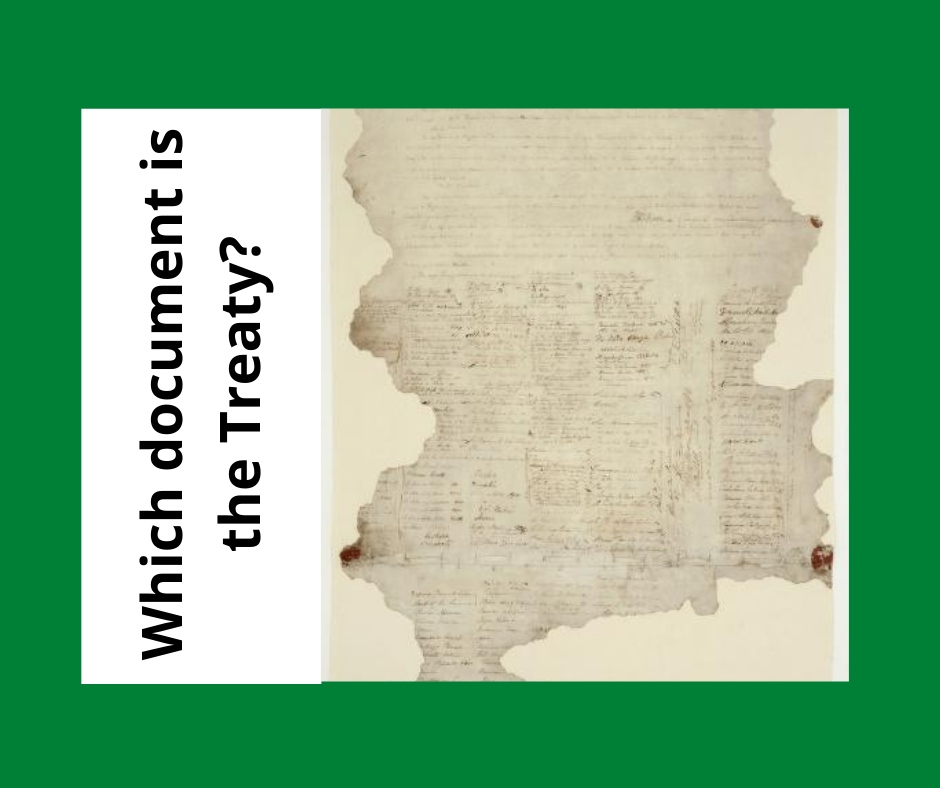Note: We use ‘the Treaty of Waitangi’ and ‘te Tiriti o Waitangi’ interchangeably to signify the reo Maori text. We call the English language document ‘the Crown’s English language version’ or similar.
The reo Māori (the Māori language) text of Te Tiriti o Waitangi is the only authentic text of the Treaty. It was the one signed at Waitangi by Hobson and the Rangatira, and Hobson always saw the Waitangi signing as the most significant. The great majority of the 534 Rangatira who signed the Treaty around the country signed Te Tiriti o Waitangi in te reo Māori and it was the content of this document which was discussed and agreed to at every signing event, regardless of which document was actually signed. The English language text was not signed at Waitangi on February 6th 1840 – it was a later creation.
For the small number of Rangatira who signed the English-language text their agreement would have been to what was discussed i.e. the contents of the text in Māori. All the discussions at the signings were in the Māori language and in Māori law the words spoken are crucial. The late Sir James Henare said that the key to the Treaty’s meaning and mana lay in the Māori text – “ko te mana te kupu, ko te kupu te mana”.
Furthermore, in international contract law, when the intent or meaning of a legally binding contract is not clear, the principle of contra proferentem applies. This means the interpretation of any ambiguous provision will be against the interests of the party that put forward (proffered) the wording – in this case, the British (which later became the New Zealand) Crown – and in favour of the other party or parties to the contract – in this case Māori.
In addition, international law upholds the text with “significant signature”, i.e. the one with more signatures, and also gives weight to the oral context, i.e. what was said or promised at the time.
Moreover, in 1840 the population was 100,000 – 200,000 Māori and about 2,000 Pākehā. It is absurd to suggest that those Rangatira who signed Te Tiriti would have voluntarily given up their power to a foreign entity, especially after having declared their national sovereignty and independence just five years previously in He Wakaputanga o te Rangatiratanga o Nu Tireni. In fact, it was legally and culturally impossible for rangatira to give away the mana and rangatiratanga of their hapū (B. Korewha, M. Jackson, Ngāpuhi Speaks, pp. 175–176). Rangatiratanga is handed down from the ancestors and exercised by rangatira in concert with the people for the benefit of their descendants.
The evidence given at the hearing of the Ngāpuhi Nui Tonu initial claim to the Waitangi Tribunal (2010–2011) made it clear that Te Tiriti o Waitangi is the authentic Treaty (Ngāpuhi Speaks, pp. 221–222) and the Tribunal accepted that claim (see the Tribunal’s report on WAI1040). It is an unfortunate legacy that legislation drawn up in 1975, without the benefit of Maori evidence and scholarship, required the Waitangi Tribunal to give equal weight to both texts.
Sources:
Treaty of Waitangi Questions & Answers, Network Waitangi 2018

